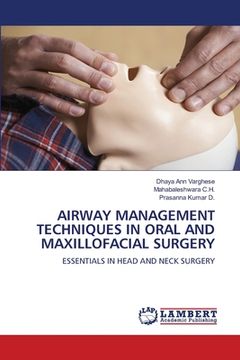Share
Airway Management Techniques in Oral and Maxillofacial Surgery (in English)
Prasanna Kumar D.
(Author)
·
Dhaya Ann Varghese
(Author)
·
Mahabaleshwara C. H.
(Author)
·
LAP Lambert Academic Publishing
· Paperback
Airway Management Techniques in Oral and Maxillofacial Surgery (in English) - Ann Varghese, Dhaya ; C. H., Mahabaleshwara ; Kumar D., Prasanna
$ 64.00
$ 76.00
You save: $ 12.00
Choose the list to add your product or create one New List
✓ Product added successfully to the Wishlist.
Go to My WishlistsIt will be shipped from our warehouse between
Monday, July 15 and
Tuesday, July 16.
You will receive it anywhere in United States between 1 and 3 business days after shipment.
Synopsis "Airway Management Techniques in Oral and Maxillofacial Surgery (in English)"
Preferred techniques of securing an airway like orotracheal, nasotracheal may not always be applicable, thus a trauma surgeon-anaesthesist team should always have alternative techniques in their armamentarium to reduce the morbidity associated with these patients. One technique may not be applicable for every patient, thus knowledge about different techniques available is equally required. Any situation when a patient cannot be oxygenated or ventilated should prompt the insertion of a surgical airway. Any effort to keep the airway open is important and lifesaving in such situations. A choice must be made regarding the kind of airway control that will work best for the planned surgery. Some patients enter the operating room aware, breathing on their own, and with just little maxillofacial injuries. Nasoendotracheal intubation may be utilised for airway management during surgery in some patients. Patients who have midface fractures or fractures at the base of the skull should generally avoid nasoendotracheal intubation. When a patient needs facial intubation, a less-used, safe, and effective method is submental intubation.
- 0% (0)
- 0% (0)
- 0% (0)
- 0% (0)
- 0% (0)
All books in our catalog are Original.
The book is written in English.
The binding of this edition is Paperback.
✓ Producto agregado correctamente al carro, Ir a Pagar.

